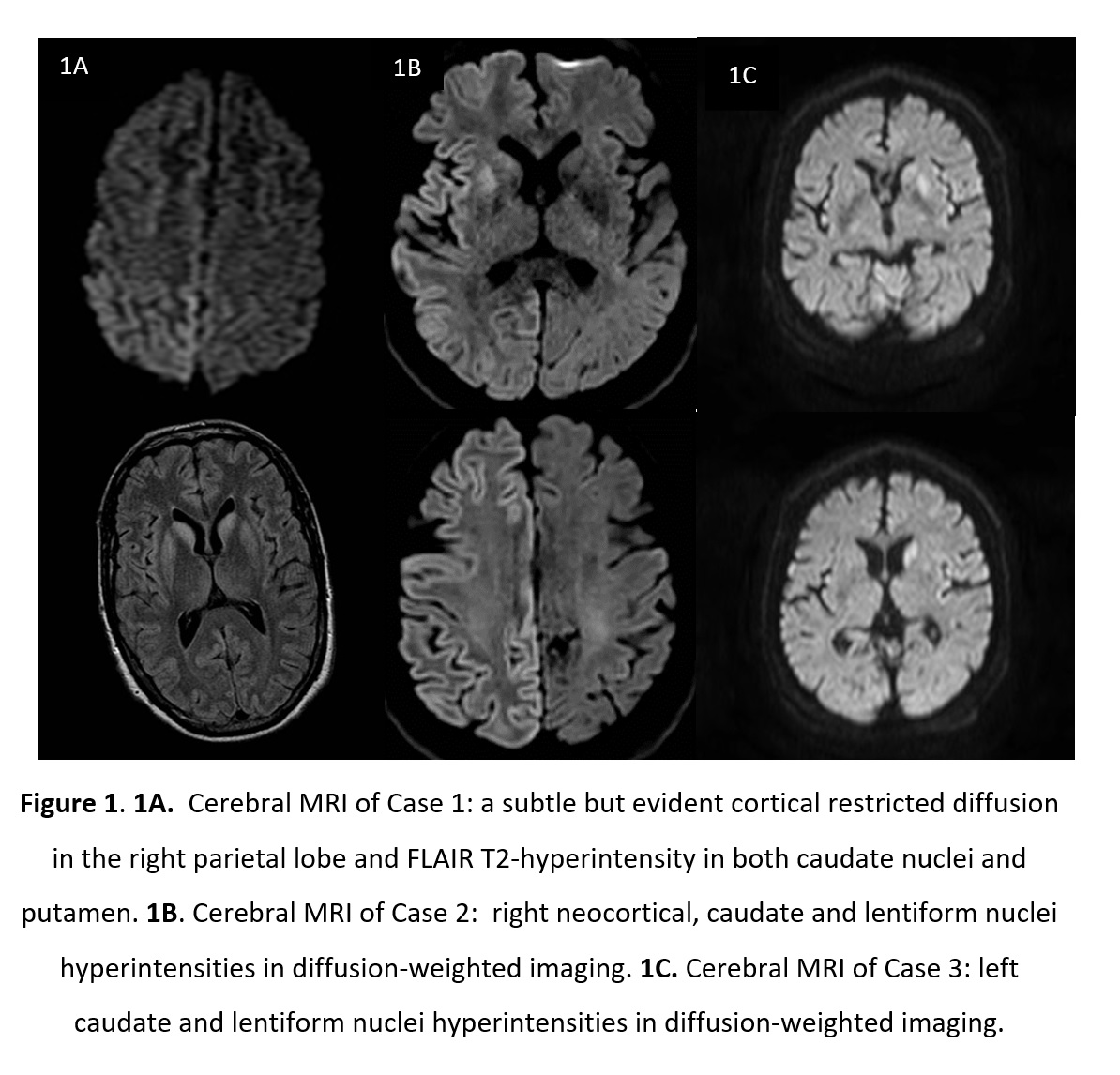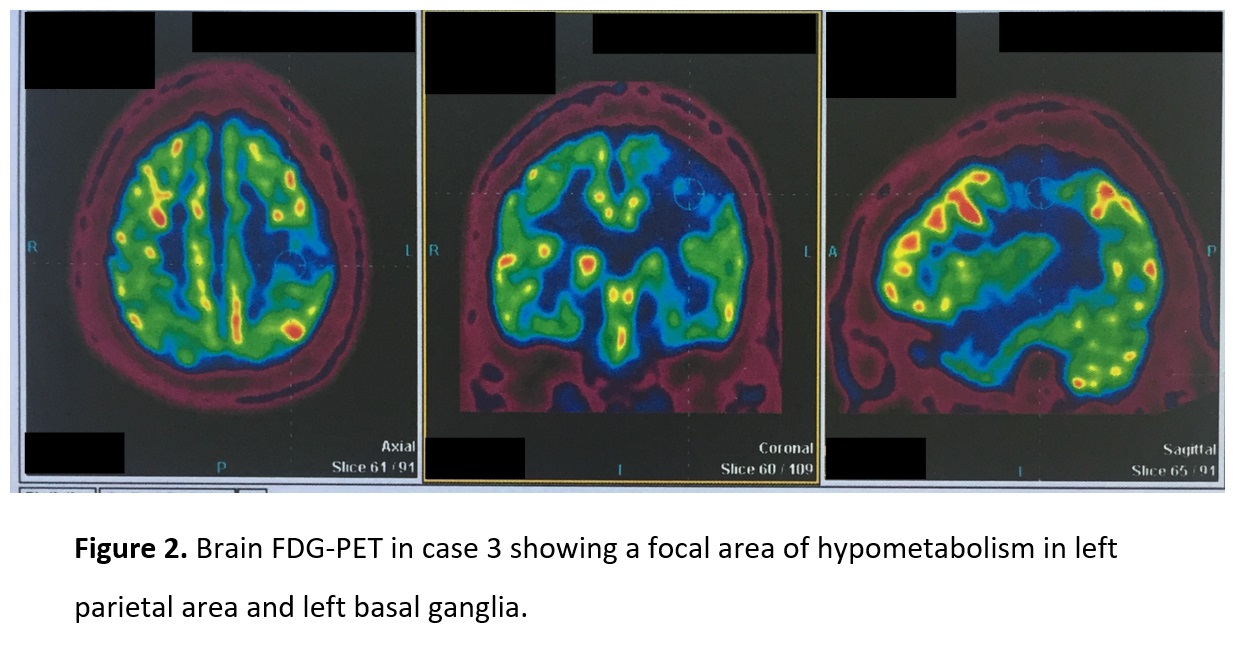Objective: To describe a clinical series of three patients who presented positive signs of a Functional Movement Disorder (FMD) at the onset of a sporadic Creutzfeldt-Jakob disease (sCJD).
Background: Distractibility and inconsistency on physical examination are considered positive signs that support the diagnosis of Functional Neurological Disorders (FND). However, none of these signs is by itself pathognomonic of FND and their presence can be seen in the onset of other neurological diseases. Understanding how FND appear in patients with neurological disease (“functional overlay”) can provide information on pathophysiological mechanisms that participate in the genesis of these disorders.
Method: Description of a clinical series of patients.
Results: Patient 1. A 49-year-old male consulted for abnormal movements in the left extremities. On examination, he presented a give-away weakness and irregular tremor that entrained with rhythmic movements of the other hand. The tremor also ceased with distraction and with contralateral ballistic movements. After a month he developed a left corticobasal syndrome.
Patient 2. A 55-year-old woman with a sudden onset tremor and restlessness in the left arm. The examination revealed infantile speech, give away weakness of the left arm, distractible tremor, and Hoover’s sign in the left leg. After two months she progressed to a left corticobasal syndrome.
Patient 3. A 63-year-old male who consulted for abnormal movements in his right hand after a mild trauma. Examination showed a tremor in the right hand that stopped with distraction and pacing, and slow, erratic hand movements at rest. After a month he worsened with severe dysarthria, hand dystonia, and ataxia.
All three patients ended up meeting the criteria for probable sporadic CJD (consistent abnormalities in cranial MRI, EEG and positive 14.3.3 in CSF) and died within 2-3 months since clinical presentation. Only in patient 3 was an autopsy performed, confirming the pathological diagnosis.
Conclusion: Positive signs of FND can be observed in other diseases, such as prion diseases, especially if there is involvement of the parietal lobe. The possibility of having FND as a comorbidity of other neurological diseases should not discourage neurologists from making a positive diagnosis of FND but support that the neurological examination and follow-up is crucial in these patients.
References: 1. Yegya-Raman, N. et al. A Case of Sporadic Creutzfeldt-Jakob Disease Presenting as Conversion Disorder. Case Reports in Psychiatry 2017, 1–4 (2017). 2. Drane DL, Fani N, Hallett M, Khalsa SS, Perez DL, Roberts NA. A framework for understanding the pathophysiology of functional neurological disorder. CNS Spectr. 2020 Sep 4:1-7. doi: 10.1017/S1092852920001789. Epub ahead of print.
To cite this abstract in AMA style:
V. Gómez-Mayordomo, M. Kojovic, E. López-Valdés, F. Alonso-Frech, A. Horga-Hernández, R. Fernández-Rodríguez, I. Pareés. Functional neurological symptoms as initial presentation of Creutzfeldt-Jacob Disease: case series. [abstract]. Mov Disord. 2021; 36 (suppl 1). https://www.mdsabstracts.org/abstract/functional-neurological-symptoms-as-initial-presentation-of-creutzfeldt-jacob-disease-case-series/. Accessed April 1, 2025.« Back to MDS Virtual Congress 2021
MDS Abstracts - https://www.mdsabstracts.org/abstract/functional-neurological-symptoms-as-initial-presentation-of-creutzfeldt-jacob-disease-case-series/


